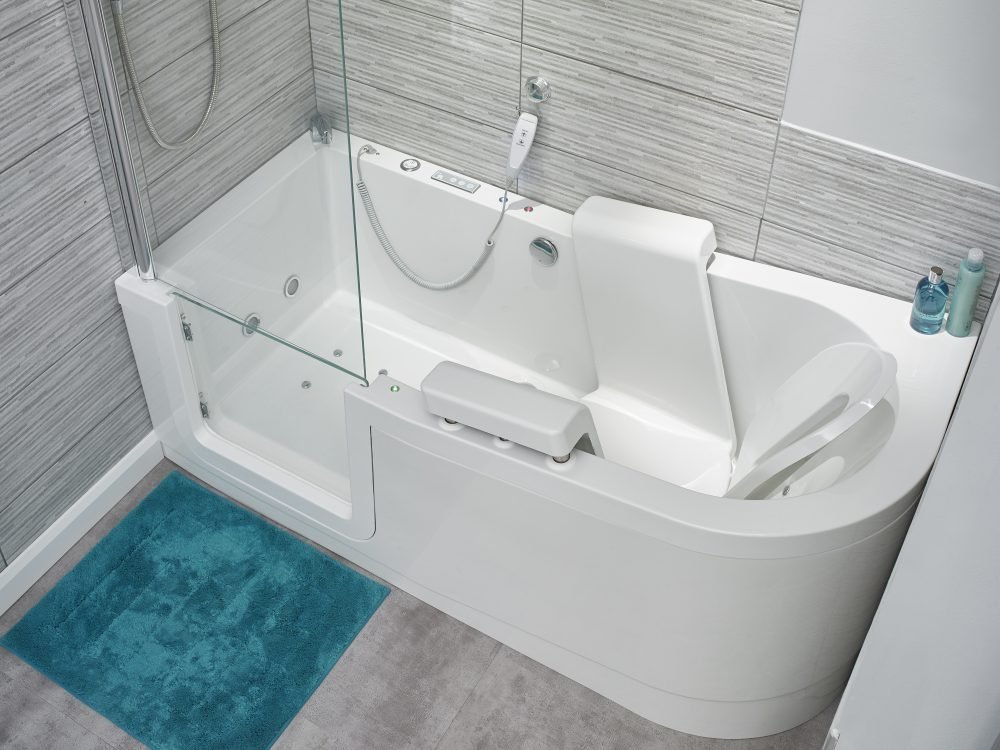Renting a house can be an exciting yet challenging experience, especially for first-time renters. Understanding the process and knowing what to expect can make a significant difference in finding the right home and ensuring a smooth transition. This guide will walk you through the essential steps to renting a house, from preparation and finding the right place to signing the lease and settling in.
Introduction
Renting a house is often seen as a practical alternative to buying property, particularly for those who value flexibility or are not yet ready to commit to homeownership. Whether you’re moving for work, studying, or simply seeking a change of scenery, knowing how to navigate the rental process is crucial. This guide will provide a clear path through each stage of renting a house, helping you make informed decisions and avoid common pitfalls.
Why Rent a House?
Benefits of Renting vs. Buying
Renting offers several advantages over buying a home. One of the main benefits is flexibility. Renting allows you to move more easily if your job changes or if you want to explore different neighborhoods. It also typically requires less upfront financial commitment compared to buying, which involves a down payment, closing costs, and other expenses. Renting can also provide a buffer against market fluctuations, as you’re not responsible for the property’s long-term value.
Flexibility and Financial Aspects
Financially, renting can be less burdensome than buying. Renters are not responsible for major repairs or property taxes, which can significantly reduce costs. Additionally, renting usually requires only a security deposit and the first month’s rent, making it more accessible for those who may not have substantial savings. This financial flexibility allows you to allocate your resources towards other priorities, such as saving for future investments or covering immediate expenses.
Preparing to Rent a House
Assessing Your Needs and Preferences
Before starting your search, it’s important to assess your needs and preferences. Consider factors such as the size of the house, number of bedrooms, and proximity to work or school. Think about additional amenities you might want, like a yard, garage, or pet-friendly policies. By clarifying what you need and want, you can streamline your search and focus on properties that best fit your lifestyle.
Setting a Budget
Setting a budget is a crucial step in the renting process. Determine how much you can afford to spend on rent each month without stretching your finances too thin. A good rule of thumb is that your rent should not exceed 30% of your gross monthly income. Remember to account for other expenses, such as utilities, renters’ insurance, and potential maintenance costs, when creating your budget.
Researching Neighborhoods and Amenities
Choosing the right neighborhood can be as important as finding the right house. Research areas that are convenient for your daily needs, such as grocery stores, public transportation, and schools. Look for neighborhoods with amenities that match your lifestyle, whether it’s parks, restaurants, or entertainment options. Visiting different areas and talking to current residents can provide valuable insights into what each neighborhood has to offer.
Finding the Right House to Rent
Using Online Resources and Rental Listings
The internet offers a wealth of resources for finding rental properties. Websites and apps like Zillow, Craigslist, and Apartments.com provide extensive listings of available homes. These platforms often include photos, descriptions, and sometimes virtual tours, helping you get a sense of the property before scheduling a visit. Filtering your search based on your criteria can help you find houses that meet your needs and preferences.
Working with Real Estate Agents
Real estate agents can be a valuable resource in your search for a rental home. They have access to listings that may not be publicly available and can provide expert advice on finding a property that fits your criteria. An agent can also assist with negotiations and handle much of the paperwork, making the process smoother and less stressful. While there may be a fee involved, the convenience and support they offer can be well worth it.
Visiting Potential Houses and What to Look For
Once you’ve identified potential Rent a House, schedule visits to see them in person. During these visits, pay close attention to the condition of the property, including appliances, plumbing, and general cleanliness. Check for any signs of damage or maintenance issues that might need addressing. Additionally, evaluate the neighborhood’s safety, noise levels, and overall atmosphere to ensure it aligns with your expectations.
Understanding Lease Agreements
Key Terms and Conditions in a Lease
A lease agreement outlines the terms and conditions of your rental arrangement. Key elements include the lease duration, rent amount, and due dates. It’s important to understand any clauses related to security deposits, maintenance responsibilities, and rules regarding modifications to the property. Make sure you know what is expected of you as a tenant and what your landlord’s obligations are.
Duration, Rent Amount, and Renewal Options
Leases can vary in length, typically ranging from six months to a year. Be aware of the lease duration and what happens at the end of the term. Some leases automatically renew unless you give notice, while others may require you to negotiate a new agreement. Understand the rent amount and any potential increases that might occur during the lease term, as well as the process for renewing or terminating the lease.
Responsibilities and Obligations of Both Parties
Both the landlord and tenant have responsibilities outlined in the lease agreement. As a tenant, you are expected to pay rent on time, keep the property in good condition, and follow any rules set by the landlord. The landlord’s responsibilities generally include maintaining the property, making necessary repairs, and ensuring the property meets safety standards. Knowing these responsibilities can help prevent disputes and ensure a positive rental experience.
The Application Process
How to Apply for a Rental Property
Applying for a rental property typically involves filling out an application form, which may be available online or through a real estate agent. The application will ask for personal information, rental history, and financial details. Be prepared to provide accurate information and answer any questions about your employment, previous rentals, and reasons for moving.
Documentation Needed
Most rental applications require documentation to verify your eligibility. This may include proof of income, such as pay stubs or bank statements, and references from previous landlords or employers. Some landlords might also request a credit check or background check. Gathering these documents ahead of time can speed up the application process and improve your chances of securing the rental.
What to Expect During the Application Review
Once you submit your application, the landlord or property manager will review it to assess your suitability as a tenant. This review may involve checking your credit history, verifying your income, and contacting your references. The review process can take anywhere from a few days to a couple of weeks. During this time, you may be asked for additional information or clarification.
Signing the Lease
Reviewing the Lease Agreement Carefully
Before signing the lease, it’s essential to review the document thoroughly. Read through each clause to ensure you understand the terms and conditions. Pay attention to details such as the rent amount, security deposit, and any rules or restrictions. If you have any questions or concerns, address them with the landlord or property manager before signing.
Negotiating Terms if Necessary
If there are terms in the lease that you find concerning or that don’t meet your needs, don’t hesitate to negotiate. For example, you might ask for changes to the lease duration or request modifications to certain rules. While not all landlords are open to negotiation, it’s worth discussing any concerns to ensure the lease aligns with your expectations.
Importance of Understanding the Fine Print
The fine print in a lease agreement can contain important details that might not be immediately obvious. This includes clauses related to late fees, subletting policies, and procedures for terminating the lease. Understanding these details is crucial to avoid unexpected issues or disputes during your tenancy. Take the time to read and comprehend every part of the lease agreement before signing.
Moving In
Preparing for Your Move
Moving into a new house requires careful planning and preparation. Start by creating a moving checklist that includes tasks such as packing, hiring movers, and setting up utilities. Make sure to notify your current landlord of your move-out date and follow any required procedures. Preparing ahead of time can help ensure a smooth transition and reduce last-minute stress.
Conducting a Move-In Inspection
Before you officially move in, conduct a thorough inspection of the property. Document the condition of the house by taking photos or videos of any existing damage or issues. Share this documentation with your landlord to avoid disputes over the security deposit when you move out. This inspection is also an opportunity to identify any immediate repairs or maintenance needs.
Setting Up Utilities and Services
Once you’ve moved in, you’ll need to set up utilities and services such as electricity, water, gas, and internet. Contact local service providers to arrange for these services to be activated on your move-in date. It’s also a good idea to review your utility usage and set up any necessary accounts to manage your bills efficiently.
Maintaining a Good Relationship with Your Landlord
Communication Tips
Maintaining open and respectful communication with your landlord can help foster a positive rental experience. If you encounter any issues or have questions, address them promptly and professionally. Keeping a record of all communications can also be helpful in resolving any disputes that may arise.
Handling Maintenance and Repair Requests
If you notice any maintenance or repair issues, report them to your landlord as soon as possible. Follow the procedures outlined in your lease agreement for submitting repair requests. Document the issue and any communications with your landlord to ensure that repairs are completed in a timely manner.
Understanding Your Rights as a Tenant
As a tenant, you have specific rights protected by law, such as the right to a habitable living environment and protection against unlawful eviction. Familiarize yourself with these rights to ensure that you are treated fairly and to address any concerns that may arise during your tenancy. Knowing your rights can help you advocate for yourself effectively if issues occur.
Conclusion
Renting a house involves several steps, from preparing and searching for the right property to understanding lease agreements and settling into your new home. By following this comprehensive guide, you can navigate the renting process with confidence and make informed decisions that lead to a positive renting experience. Remember to stay organized, communicate clearly with your landlord, and know your rights as a tenant to ensure a smooth and enjoyable rental journey.



